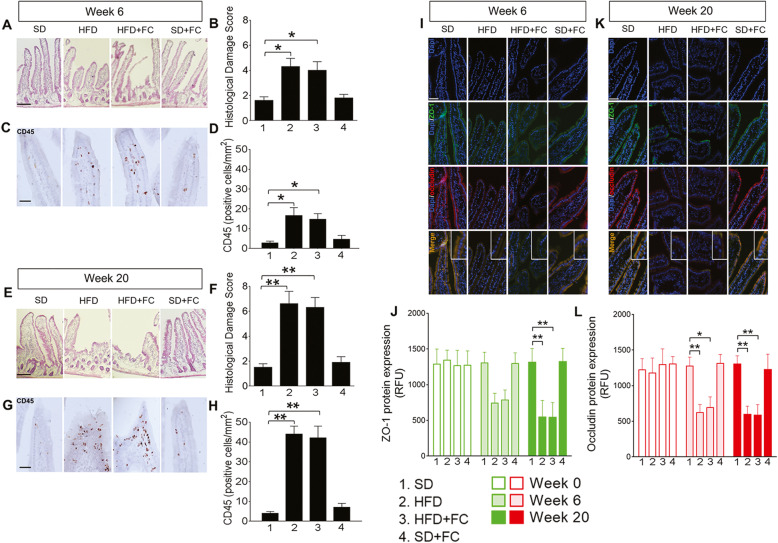Fig. 1.
HFD evokes an intestinal inflammation and impairs duodenal mucosa without enteric glia involvement. Mice were fed with a standard diet (SD) or 72% high-fat diet (HFD) for 20 weeks, alone or with a daily IP of 10 μmol/kg fluorocitrate (FC) to investigate the enteric glia involvement in HFD-induced neuropathology. Representative images of duodenal cross-sections stained by hematoxylin and eosin with relative total histological damage score at weeks 6 (a, b) and 20 (e, f) of the diet protocol are shown, respectively. Representative images showing infiltrated CD45-positive cells within the duodenal microvilli and crypts and relative quantification at weeks 6 (c, d) and 20 (g, h). Immunoreactivity for Dapi (blue), ZO-1 (green), and occludin (red) and immunolabeling quantification for ZO-1 and occludin are also shown at weeks 6 (i, j, and l) and 20 (k, j, and l) of the diet protocol, respectively. Inserts within the merge pictures are enlarged areas. Data were analyzed by 2-way ANOVA or 1-way ANOVA and Dunnett post hoc. Results are expressed as cumulative histological damage, the average number of CD45+ cells or the average relative fluorescence units (RFU) ± SEM per area unit of n assessments. *P<0.05 and **P<0.01 versus relative SD group. Scale bars = 10 and 30 μm

